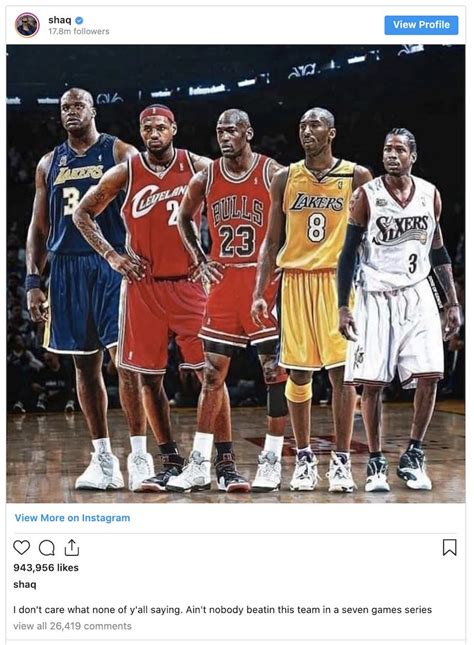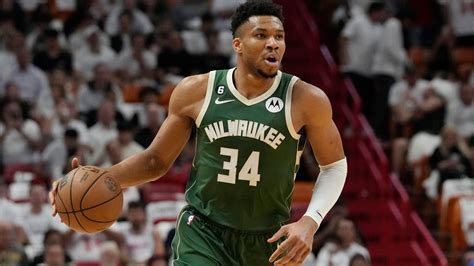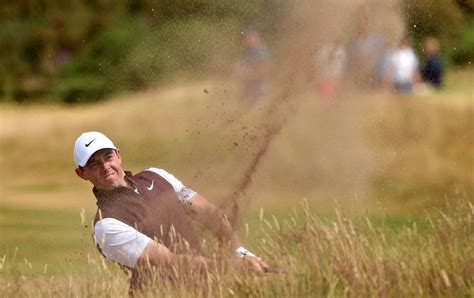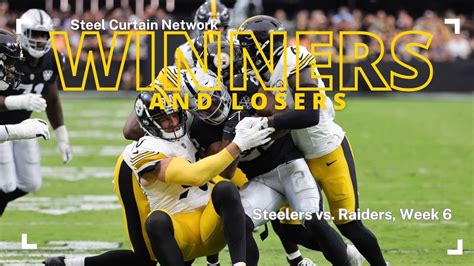
Shaquille O’Neal has confidently declared his all-time dream team would dominate any opponent in a seven-game series, boasting a lineup featuring himself, Michael Jordan, Kobe Bryant, LeBron James, and Stephen Curry.
Shaquille O’Neal, never one to shy away from bold pronouncements, recently ignited the sports world with his proclamation of an all-time dream team that he believes would be unbeatable in a seven-game series. The Los Angeles Lakers legend unveiled his hypothetical lineup, a constellation of basketball’s brightest stars: Michael Jordan, Kobe Bryant, LeBron James, Stephen Curry, and himself anchoring the center position. O’Neal’s selection has sparked fervent debate among fans and analysts alike, with many dissecting the potential synergy and vulnerabilities of such a super-team.
“It’s not up for debate,” O’Neal stated emphatically. “I’m taking Mike, Bron, Steph, Kobe, and myself. Ain’t nobody beating that team.” His conviction underscores the formidable talent and championship pedigree embodied by each player, all of whom have etched their names into basketball immortality.
The composition of O’Neal’s dream team reflects a blend of scoring prowess, playmaking wizardry, defensive tenacity, and unparalleled athleticism. Michael Jordan, widely regarded as the greatest basketball player of all time, brings an unmatched competitive fire and scoring ability, particularly in clutch moments. Kobe Bryant, often compared to Jordan for his similar skillset and relentless work ethic, adds another layer of offensive firepower and defensive intensity. LeBron James, a four-time NBA champion and arguably the most versatile player in history, offers exceptional playmaking, scoring, and rebounding. Stephen Curry, the greatest shooter the game has ever seen, stretches the floor with his limitless range and provides a constant offensive threat. And O’Neal himself, a dominant force in the paint, brings size, power, and an unstoppable low-post presence.
O’Neal’s audacious claim has understandably triggered a wave of reactions, both supportive and critical. Some argue that the sheer talent assembled in this hypothetical team would overwhelm any opposition, while others point to potential challenges in terms of ego management, role allocation, and team chemistry. Questions surrounding ball distribution, defensive matchups, and leadership dynamics have fueled countless discussions across social media platforms and sports talk shows.
Analyzing each player’s strengths further highlights the potential dominance of this dream team. Jordan’s scoring efficiency and defensive prowess are legendary, having led the Chicago Bulls to six NBA championships. Bryant, a five-time NBA champion with the Lakers, possessed a similar scoring mentality and defensive intensity, making him a formidable two-way player. James, known for his all-around game, has consistently demonstrated the ability to elevate his teammates and control the flow of the game. Curry’s shooting accuracy from beyond the arc would create spacing and opportunities for his teammates, while O’Neal’s imposing presence in the paint would demand double-teams and open up the floor for the perimeter players.
However, the question of how these individual superstars would mesh together remains a topic of debate. The history of super-teams in the NBA is filled with examples of both resounding success and spectacular failure. The Miami Heat’s Big Three of James, Dwyane Wade, and Chris Bosh achieved two championships, but faced challenges in their early years as they learned to play together. Similarly, the Lakers’ acquisition of Dwight Howard and Steve Nash to join Bryant and Pau Gasol ultimately fell short of expectations due to injuries and chemistry issues.
One potential concern for O’Neal’s dream team is the overlap in roles and the need for players to adjust their playing styles. Both Jordan and Bryant were accustomed to being the primary scoring options on their respective teams, and James has typically thrived as the focal point of the offense. Curry, while capable of playing off the ball, has also demonstrated the ability to lead an offense and create scoring opportunities for himself and others.
To address these potential challenges, a strong coach would be essential to establish clear roles, foster a team-first mentality, and maximize the collective talent of the roster. Phil Jackson, who coached both Jordan and Bryant to multiple championships, could be a logical choice. Gregg Popovich, known for his ability to develop cohesive teams and manage superstar egos, would also be a strong candidate.
Defensively, the dream team would possess the versatility and athleticism to guard multiple positions and disrupt opposing offenses. Jordan and Bryant were both elite defenders in their prime, capable of locking down their opponents and creating turnovers. James’ size, strength, and intelligence would allow him to guard multiple positions and provide help defense. Curry, while not known for his defensive prowess, has improved his effort and awareness on that end of the floor. O’Neal’s imposing size and shot-blocking ability would protect the paint and deter opponents from attacking the basket.
However, even with its immense talent, O’Neal’s dream team would not be without vulnerabilities. Opponents could attempt to exploit potential mismatches on defense, targeting Curry with bigger and stronger players. The lack of a traditional point guard could also be a concern, as James, while an exceptional playmaker, is not a natural floor general in the mold of Magic Johnson or John Stockton.
Furthermore, the team’s success would depend on the players’ willingness to sacrifice individual statistics and embrace a team-first approach. In a seven-game series, opponents would undoubtedly adjust their game plans and attempt to exploit any weaknesses or vulnerabilities. The dream team would need to remain disciplined, focused, and adaptable to overcome these challenges.
Ultimately, whether O’Neal’s dream team would truly be unbeatable is a matter of speculation. The hypothetical nature of the exercise makes it impossible to definitively determine the outcome of a series against other all-time great teams. However, the sheer talent and championship pedigree of the players involved make a compelling case for their potential dominance.
The composition of an “unbeatable” team is, of course, highly subjective and dependent on various factors, including playing styles, eras of the game, and the specific criteria used for evaluation. Other hypothetical dream teams could be constructed, featuring legends such as Bill Russell, Wilt Chamberlain, Magic Johnson, Larry Bird, and Kareem Abdul-Jabbar, among others. Each of these players brought unique skills and qualities to the game, and their inclusion in a dream team would undoubtedly create a different dynamic and set of strengths and weaknesses.
The beauty of such discussions lies in the endless possibilities and the opportunity to celebrate the legacy of basketball’s greatest players. Whether O’Neal’s dream team would truly be unbeatable remains a matter of debate, but there is no question that it represents a collection of talent and achievement that is rarely seen in the history of the sport.
The debate sparked by Shaq’s dream team also underscores the enduring fascination with hypothetical matchups and the desire to compare players from different eras. While it is impossible to definitively determine how these players would fare against each other in a real-world setting, the exercise allows fans to appreciate the unique skills and accomplishments of each generation of basketball legends.
Moreover, Shaq’s selection highlights the importance of individual preferences and subjective evaluations in shaping opinions about the greatest players of all time. Each fan has their own criteria for judging greatness, whether it be championships won, individual statistics, or overall impact on the game. As a result, debates about the greatest players of all time are often passionate and never definitively resolved.
The discussion also reflects the evolution of the game of basketball over time. The sport has undergone significant changes in terms of playing styles, rules, and strategies. Players from different eras faced different challenges and had different advantages. Comparing players from different eras requires an understanding of the context in which they played and the specific skills and qualities that were valued during their time.
Ultimately, Shaq’s dream team serves as a reminder of the rich history and enduring appeal of basketball. The sport has produced countless legendary players, each with their own unique story and set of accomplishments. Whether it’s Jordan’s scoring prowess, Bryant’s relentless work ethic, James’ all-around game, Curry’s shooting accuracy, or O’Neal’s dominant presence in the paint, these players have left an indelible mark on the game and continue to inspire generations of fans.
The discussion around this hypothetical team transcends mere speculation; it delves into the very essence of basketball greatness and the complex interplay of individual talent and team dynamics. It invites us to consider not just the statistical achievements of these players, but also their leadership qualities, their impact on the culture of the game, and their ability to elevate the performance of their teammates. It’s a testament to the power of sports to spark conversation, debate, and a shared appreciation for the extraordinary individuals who have shaped its history.
Consider, for example, the potential tactical advantages and disadvantages of such a team. On the offensive end, the spacing created by Curry’s presence would be unprecedented, potentially opening up driving lanes for James and allowing O’Neal to operate with greater freedom in the post. Jordan and Bryant, renowned for their mid-range prowess, would also benefit from the increased spacing, making them even more difficult to defend. However, opponents might attempt to exploit the team’s potential lack of a traditional point guard by employing aggressive trapping schemes and forcing turnovers.
Defensively, the team’s versatility would be a major asset, allowing them to switch matchups and effectively guard multiple positions. Jordan and Bryant’s defensive intensity would set the tone, while James’s size and athleticism would enable him to provide help defense and protect the rim. However, opponents might target Curry on defense, attempting to exploit his relative lack of size and strength.
The mental aspect of the game would also be crucial for this dream team. The players would need to be willing to sacrifice individual glory for the sake of the team, and they would need to be able to handle the pressure of playing with such high expectations. Leadership would be essential, and it would be interesting to see how the roles of Jordan, James, and Bryant would evolve in such a scenario.
Furthermore, the composition of opposing teams would undoubtedly influence the outcome of a hypothetical series. A team featuring dominant big men like Hakeem Olajuwon and Tim Duncan might pose a challenge to O’Neal, while a team with exceptional perimeter defenders like Scottie Pippen and Dennis Rodman might make it difficult for Jordan and Bryant to score.
Ultimately, the debate surrounding O’Neal’s dream team serves as a celebration of basketball’s rich history and the incredible talent that has graced the sport over the years. It allows fans to engage in passionate discussions about their favorite players and to imagine what it would be like to witness these legends competing together on the same court. While it may be impossible to definitively determine the outcome of such a hypothetical matchup, the exercise provides a valuable opportunity to appreciate the unique skills and accomplishments of basketball’s greatest players and to reflect on the enduring appeal of the sport.
The impact of coaching cannot be overstated. A coach capable of melding these immense talents would need exceptional leadership skills, strategic acumen, and the ability to manage potentially conflicting egos. Names like Phil Jackson, known for his success with Jordan and Bryant, or Gregg Popovich, renowned for his team-oriented approach and ability to maximize individual potential within a cohesive system, are frequently mentioned in such discussions. The coach would be responsible for establishing clear roles, fostering a culture of mutual respect, and ensuring that the players are aligned in their pursuit of a common goal. The ability to adapt to different game situations and make adjustments on the fly would also be critical.
The potential weaknesses of this dream team, while perhaps less obvious than its strengths, warrant careful consideration. The absence of a true point guard, someone whose primary focus is on distributing the ball and orchestrating the offense, could lead to turnovers and a lack of offensive flow. While James is an exceptional playmaker, he is not a traditional point guard in the mold of Magic Johnson or John Stockton. The reliance on isolation plays and individual brilliance might become predictable and easier to defend against over the course of a seven-game series.
Moreover, the potential for clashes between the alpha personalities of Jordan, Bryant, and James cannot be dismissed. All three players are fiercely competitive and accustomed to being the focal point of their respective teams. A coach would need to carefully manage their roles and responsibilities to ensure that their individual ambitions do not undermine the team’s overall success. The ability to foster a culture of sacrifice and selflessness would be essential.
The changing landscape of the NBA also adds another layer of complexity to the discussion. The game has evolved significantly over the years, with a greater emphasis on three-point shooting and pace. While Curry’s presence would undoubtedly enhance the team’s offensive firepower, it is worth considering how the other players would adapt to this more modern style of play. Jordan and Bryant, known for their mid-range prowess, would need to extend their range and become more consistent three-point shooters. O’Neal, while a dominant force in the paint, would need to improve his mobility and conditioning to keep up with the faster pace.
The competition itself would be a formidable challenge. Hypothetical matchups against other all-time great teams, such as a lineup featuring Bill Russell, Wilt Chamberlain, Larry Bird, Magic Johnson, and Kareem Abdul-Jabbar, would be fiercely contested. These teams would possess different strengths and weaknesses, and the outcome of such matchups would depend on a variety of factors, including coaching, strategy, and luck.
The impact of injuries cannot be ignored. Even the most talented team can be derailed by injuries to key players. A serious injury to Jordan, Bryant, James, Curry, or O’Neal would significantly diminish the team’s chances of success. The ability to overcome adversity and adapt to unexpected challenges would be crucial.
Shaq’s Dream Team analysis further explores the nuances of each player’s inclusion and potential impact.
Michael Jordan, the epitome of competitive drive and scoring brilliance, would undoubtedly be the focal point of the offense. His ability to create his own shot, his relentless defense, and his unparalleled clutch performance make him an indispensable member of the team. However, his tendency to dominate the ball could potentially create friction with Bryant and James, both of whom are accustomed to having a significant role in the offense.
Kobe Bryant, known for his unwavering work ethic and his mastery of the fundamentals, would provide a reliable second scoring option and a tenacious defender. His ability to play off the ball and his willingness to sacrifice for the team would be valuable assets. However, his similar playing style to Jordan could lead to redundancy and a potential conflict of egos.
LeBron James, the ultimate all-around player, would bring exceptional playmaking, scoring, and rebounding to the team. His ability to elevate the performance of his teammates and his unparalleled versatility would make him a valuable asset on both ends of the court. However, his tendency to dominate the ball and his occasional lapses in focus could potentially create problems.
Stephen Curry, the greatest shooter in NBA history, would provide unparalleled spacing and offensive firepower. His ability to stretch the floor and his uncanny accuracy from beyond the arc would make him a constant threat. However, his defensive limitations could be exploited by opponents.
Shaquille O’Neal, the most dominant center of his era, would bring size, strength, and an unstoppable low-post presence to the team. His ability to command double-teams and his intimidating presence in the paint would open up opportunities for his teammates. However, his free-throw shooting struggles could be exploited by opponents.
In conclusion, while O’Neal’s dream team is undeniably a powerhouse of talent, its success would depend on a complex interplay of factors, including coaching, chemistry, strategy, and luck. The hypothetical nature of the exercise allows for endless debate and speculation, but it also provides a valuable opportunity to appreciate the unique skills and accomplishments of basketball’s greatest players and to reflect on the enduring appeal of the sport.
Frequently Asked Questions (FAQ)
1. Why did Shaq choose Michael Jordan, Kobe Bryant, LeBron James, and Stephen Curry for his all-time dream team?
Shaquille O’Neal selected these players because he believes they represent the pinnacle of basketball talent in their respective positions. Jordan and Bryant bring scoring prowess and defensive intensity, James offers exceptional playmaking and versatility, Curry provides unparalleled shooting accuracy, and O’Neal himself anchors the team with his dominant inside presence. He believes the combination of their skills and accomplishments would make the team unbeatable.
2. What potential challenges could arise with a team composed of so many dominant players?
A primary concern is the potential for ego clashes and difficulties in role allocation. Jordan, Bryant, and James were all accustomed to being the primary scoring options on their teams. Ensuring they are willing to sacrifice individual statistics for the team’s success would be critical. Also, the lack of a traditional point guard could hinder offensive flow, making the team reliant on isolation plays.
3. Who would be the ideal coach for Shaq’s dream team, and why?
Ideal coaching candidates would be figures like Phil Jackson or Gregg Popovich. Jackson’s experience coaching both Jordan and Bryant to multiple championships demonstrates his ability to manage superstar personalities. Popovich is known for his team-oriented approach and ability to maximize individual potential within a cohesive system. Either coach would need exceptional leadership skills and strategic acumen to foster a culture of mutual respect and align the players towards a common goal.
4. What are some potential weaknesses that opposing teams could exploit against Shaq’s dream team?
One potential weakness is Stephen Curry’s defensive limitations, which opponents could target with bigger, stronger players. Additionally, the absence of a true point guard might lead to turnovers and offensive stagnation if the team becomes too reliant on individual brilliance. Opponents could also try to exploit O’Neal’s free-throw shooting struggles by intentionally fouling him.
5. How does the evolving nature of the NBA affect the hypothetical performance of Shaq’s dream team?
The modern NBA emphasizes three-point shooting and pace. While Curry’s presence would enhance the team’s offensive firepower, the other players would need to adapt. Jordan and Bryant, known for their mid-range game, would need to extend their range, while O’Neal would need to improve his mobility to keep up with the faster pace. The team’s ability to adjust to the modern style of play would be crucial in determining its success against contemporary teams.









